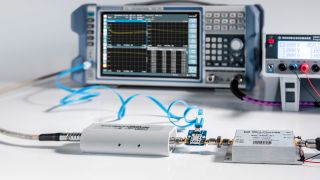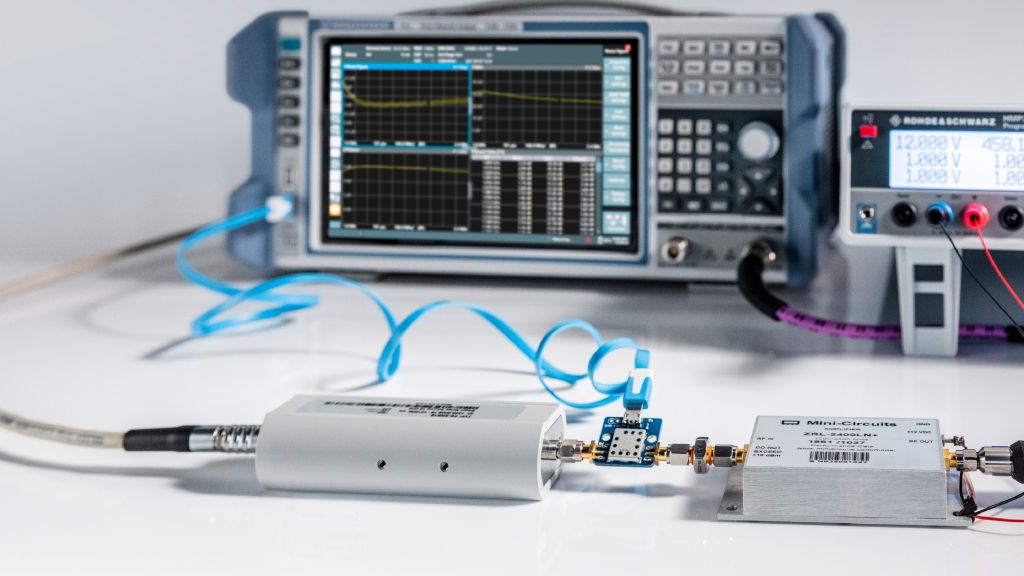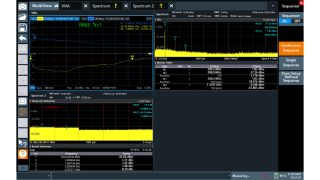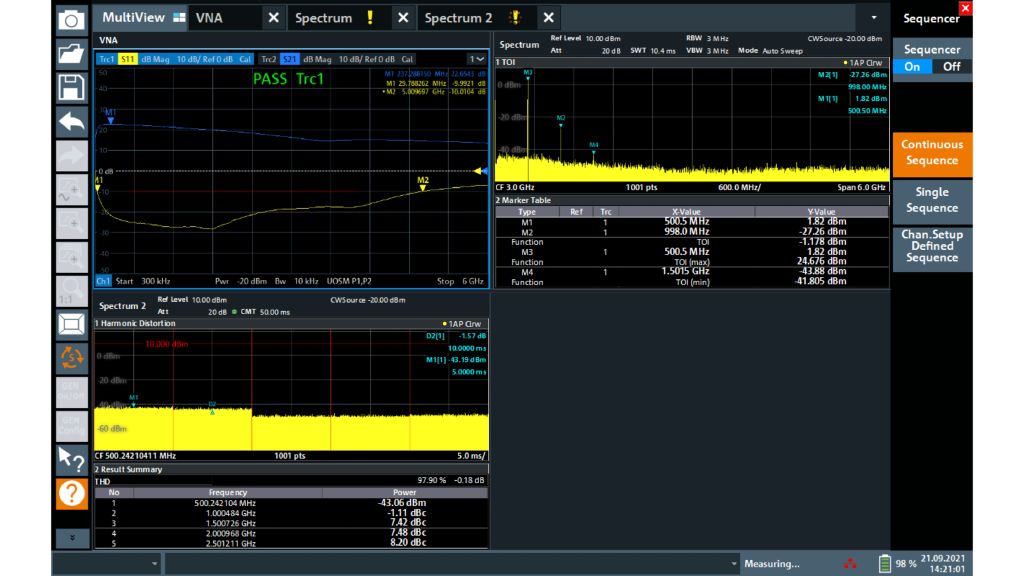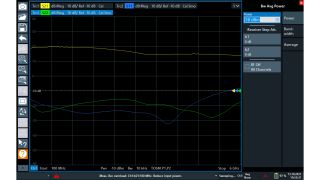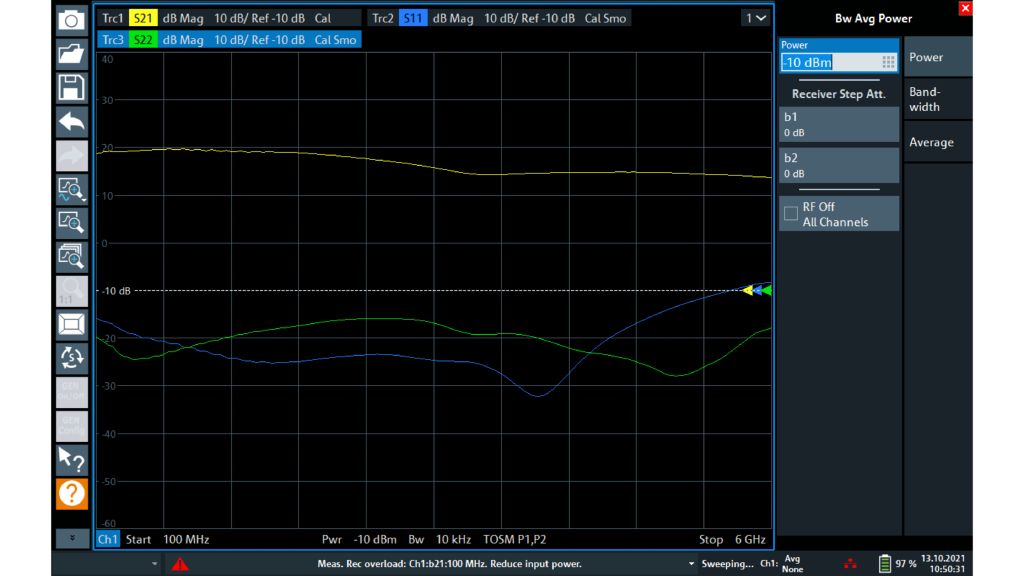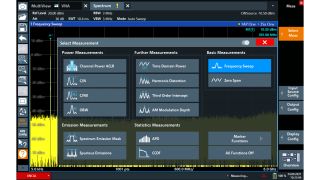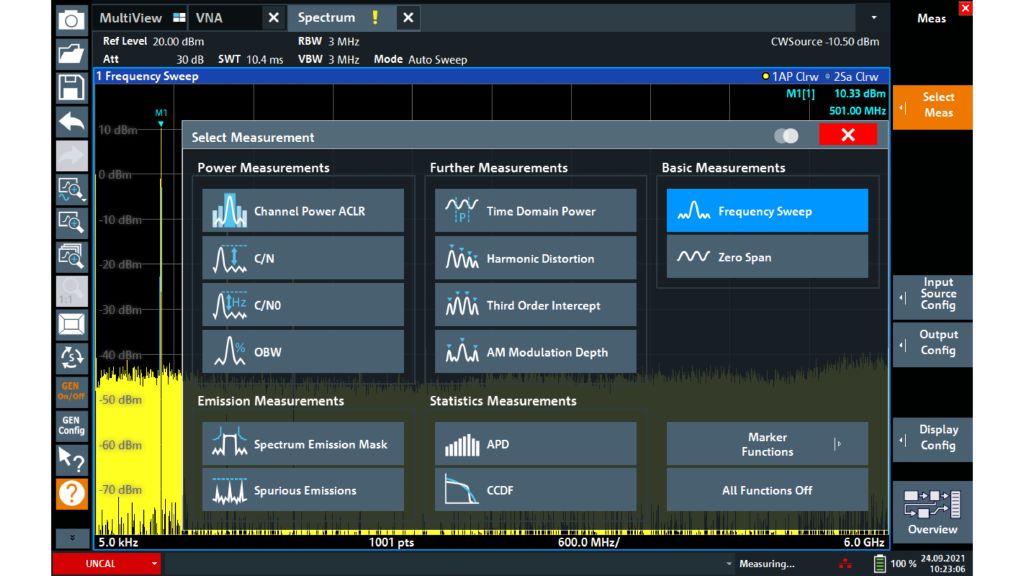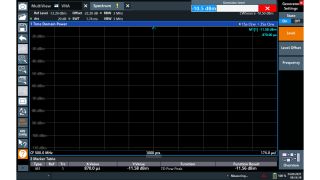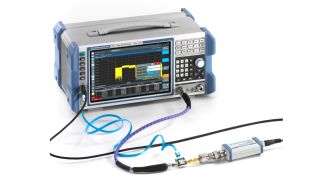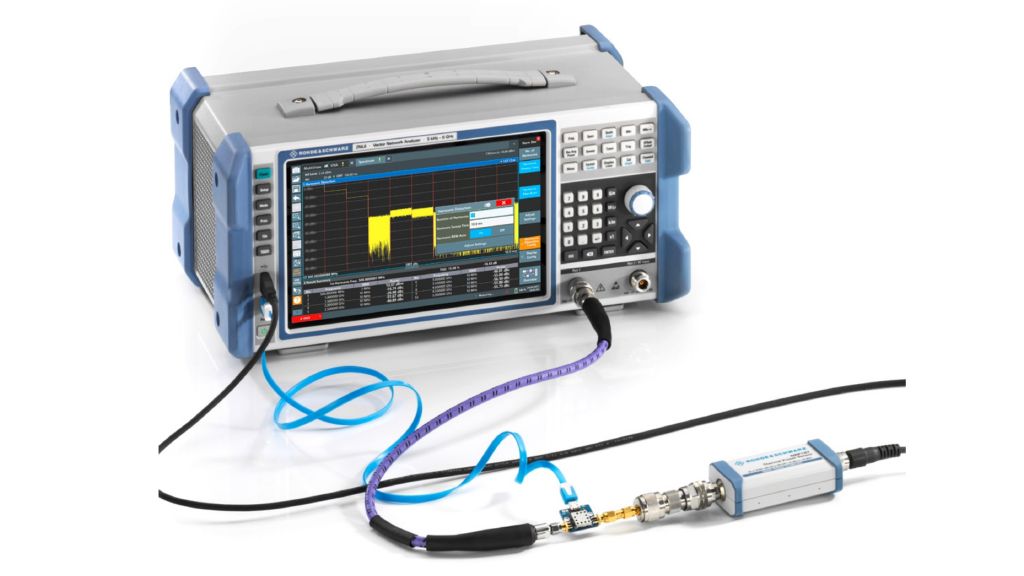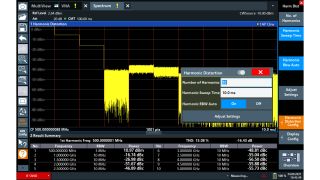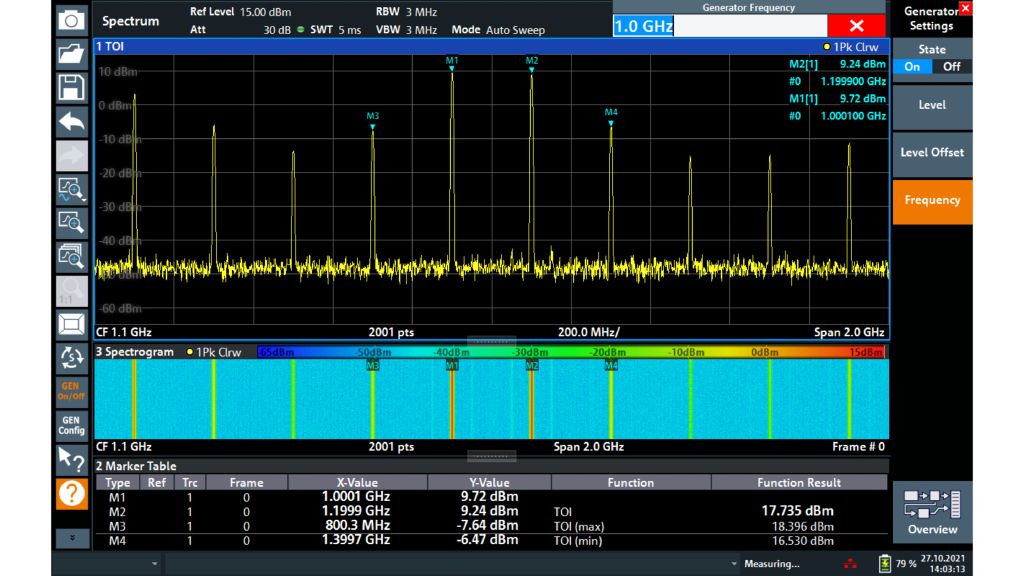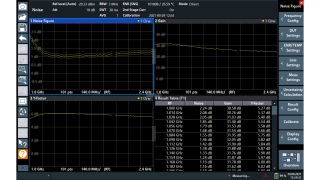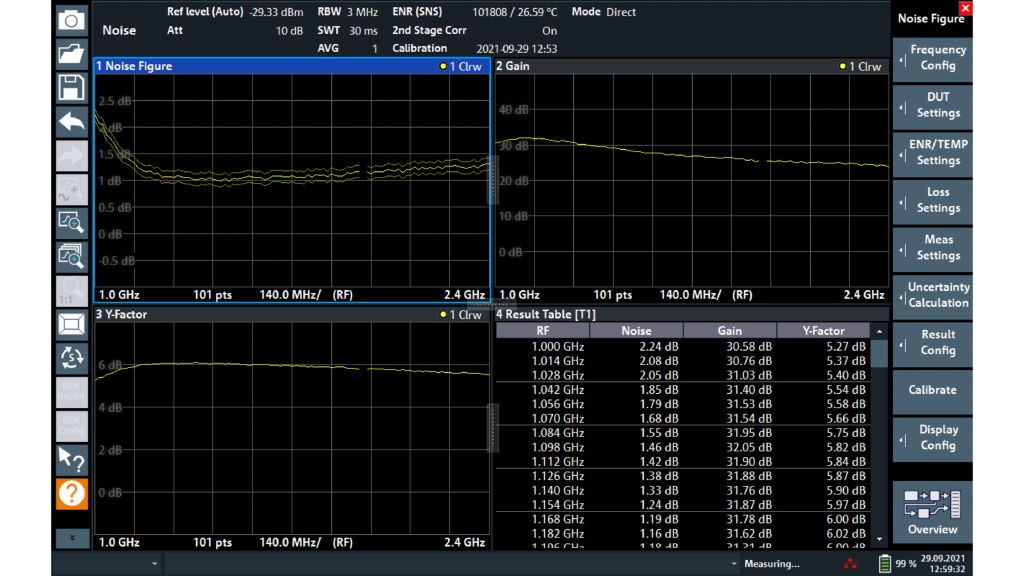Finally, a full two-port calibration is required before the test can be started. The calibration workflow in the menu guides users step by step through the process, starting from the selection of manual calibration kits or Rohde & Schwarz automatic calibration units, up to connection and measurement of standards.
The spectrum analysis mode can be accessed in the “Mode” menu, allowing several measurements to be performed and the convenient display of the relevant information. Nothing needs to be physically changed in the measurement setup.
The following measurements are recommended for amplifiers:
- Zero span
- Harmonic distortion
- Third-order intercept
“Zero span” can measure amplifier compression points at a certain frequency when a stimulus is applied at the same frequency. Usually an external signal source is required, however the R&S®ZNL-K14 option eliminates the need for additional equipment with an independent continuous wave (CW) signal generator. The only necessary settings for the receiver are selecting the test frequency and an appropriate attenuation. The generator is then configured by entering the same test frequency and a signal level low enough to ensure that the DUT is not in compression.
To identify the compression points easily, the reference offset can be tuned so that the generator level matches the amplifier output. When the CW source signal level is gradually increased, only the displayed quantity on the screen needs to be monitored and the user needs to observe when the displayed quantity falls a certain amount of dB below the selected input.



